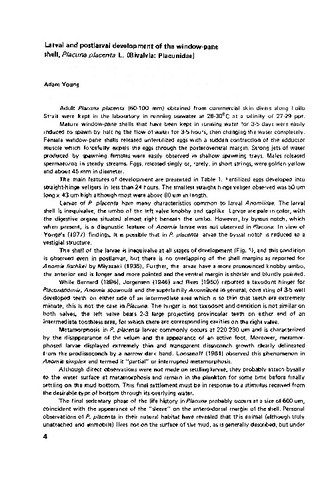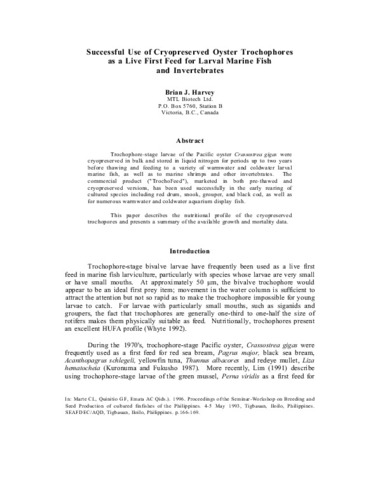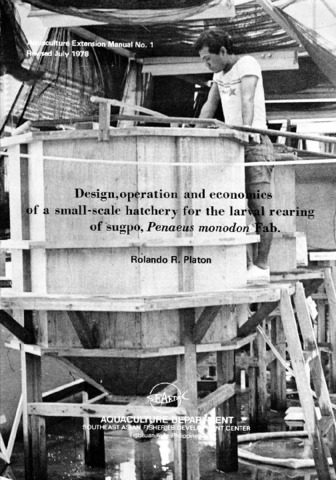Larval and postlarval development of the window-pane shell, Placuna placenta L. (Bivalvia: Placunidae)
- Global styles
- MLA
- Vancouver
- Elsevier - Harvard
- APA
- Help
Share
Abstract
Stages of development of P. placenta from the straight-hinge veliger to the adult are described. Mature larvae metamorphose at lengths from 220-230 m. Larvae probably attach byssally to the water surface at metamorphosis and remain in the plankton for some time before finally settling on the mud bottom.
Suggested Citation
Young, A. (1979). Larval and postlarval development of the window-pane shell, Placuna placenta L. (Bivalvia: Placunidae). SEAFDEC Aquaculture Department Quarterly Research Report , 3(2), 4-7. http://hdl.handle.net/10862/2345
Type
ArticleCollections
Related items
Showing items related by title, author, creator and subject.
-
Successful use of cryopreserved oyster trocophores as a live first feed larval marine fish and invertebrates
Harvey, Brian J. (Aquaculture Department, Southeast Asian Fisheries Development Center, 1996)Trochophore-stage larvae of the Pacific oyster Crassostrea gigas were cryopreserved in bulk and stored in liquid nitrogen for periods up to two years before thawing and feeding to a variety of warmwater and coldwater larval ... -
Series: Aquaculture extension manual; No. 1
Design, operation and economics of a small-scale hatchery for the larval rearing of sugpo, Penaeus monodon Fab.
Platon, Rolando R. (Aquaculture Department, Southeast Asian Fisheries Development Center, 1978)One of the major problems in the mass production of sugpo is how to obtain a constant supply of fry. Since ultimately it is the private sector which should produce the sugpo fry to fill the needs of the industry, the ... -
Mass larval rearing technology of marine finfish in Japan
Fukusho, Kunihiko (Aquaculture Department, Southeast Asian Fisheries Development Center, 1996)With economic development and increased demand for high price fish, industrial scale marine finfish culture in Japan was started in 1960-1965 for yellowtail Seriola quinqueradiata. Sustainable supply of wild juvenile and ...






